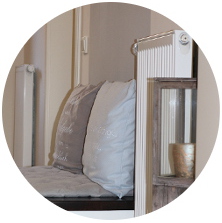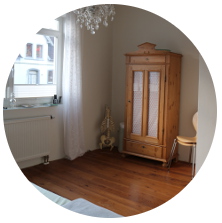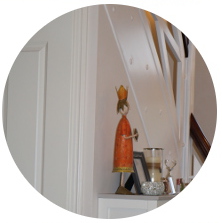
Osteopathy was founded about 120 years ago by the American physician Dr. Andrew Taylor Still, who was looking for a holistic way of therapy. Through years of research and deepening his knowledge of anatomy and physiology, he discovered that the basis of a functional impairment is always the same, loss of movement.
The resulting increased tissue tension, reduced blood circulation and a disturbed nervous system ultimately lead to a variety of symptoms. Under normal conditions, the human body with all its functional circuits works in balance. To maintain this balance, the movement or mobility of all structures in the body is necessary.
The body
Our body is a fascinating unit. A disturbance within this system is compensated by the body in the best possible way depending on its reserves. However, the range in which the body can strive for compensation is limited. This is the point at which complaints arise.
However, the symptom is not necessarily the cause, i.e. complaints in the neck area can have their cause in the lumbar region, for example.
Due to his knowledge of the connections between the body systems, the osteopath is able to locate the cause of the complaints and create optimal conditions for recovery. This gives the human body the basis for self-regulating to find its individual functional balance again.
“Osteopathy sees itself as an art that leads the organism to self-correction.”
J. P. Barral
The osteopathic concept
The osteopathic concept regards the human being and his many functional cycles as a unit. The various bodily functions are interlocked like the gear train of a clock. If there is a disorder, this malfunction also affects other control circuits in the organism. A disturbance within this system is compensated by the body in the best possible way depending on its reserves. However, the range in which the body can attempt to compensate is limited. This is the point at which complaints arise. As already mentioned, the resulting dysfunction depends not only on the damaging stimulus, but especially on the individual way in which the person in question reacts to this disturbance of balance. Thus, it is individual with which mechanisms the body tries to establish a new balance (compensation).
Compensation is usually quite successful in the case of “small” disturbances, but when the stimulus intensity increases, e.g. in the case of trauma or when various disturbing stimuli are added together, the organism’s compensatory capacity is overstrained, and permanent disturbances (illnesses) develop.
Pain often arises as the body’s cry for help. Finally, the initial functional disorders turn into “manifest diseases”, which manifest themselves as visible changes in the structures (e.g. radiologically visible changes).
It is a guiding principle of osteopathy that everything in the human body influences each other both functionally and anatomically. Thus, for example, a movement disorder of the pelvic ring can make itself felt by complaints of distant structures (e.g. shoulders, neck, head, knees, etc.). Thus the symptom is not necessarily the cause, i.e. complaints in the neck area can have their cause in the lumbar region, for example.

Therefore, all body structures are comprehensively tested during an osteopathic examination. The entire body is included. Only in this way is it possible to identify the actual, causal disorder. These dysfunctions can be corrected by appropriate techniques.
The osteopathic concept is based on the assumption that health or undisturbed function is associated with free movement of the anatomical structures of our body. In fact, with an appropriately trained sense of touch, these movements, some of which are extremely fine, can be felt. Disorders often express themselves as a loss of free movement. These fixations in turn influence other structures of our body via muscle and ligament chains.
Local disturbances of the blood circulation, with corresponding consequences as well as nerve and hormone changes, also transmit the causal dysfunction.
History of osteopathy
Osteopathy is a holistic and comprehensive medical system based on the constantly developing knowledge of the natural sciences. The osteopathic concept was developed about 125 years ago by the American doctor Andrew Taylor Still.
According to Still’s central thesis, all life expresses itself in movement. If this is restricted, first functional disorders and later serious illnesses arise.
The consequence of the loss of movement is increased tension in tissue, reduced blood supply and a disrupted nervous system. This is the breeding ground for the resulting symptoms such as pain.

Under normal conditions, the human body with all its functional cycles is working in balance. In order to keep them in balance, movement or mobility of all structures in the body is necessary.
June 22, 1874, the day on which Still presented his concept after years of study, is considered the birth of osteopathy.
With increasing scientific knowledge of anatomy, physiology, biomechanics, etc., osteopathy has been continuously developed ever since
The pillars of osteopathy
Osteopathy divides the entire body into three parts. These influence each other and are dependent on each other.
Parietale Osteopathy
includes the locomotor system:
bones, joints, muscles, ligaments and fasciae
Visceral Osteopathy
includes the internal organs:
such as the stomach, intestines, liver, heart, lungs, kidneys, bladder, with their associated vessels, nerves and connective tissue.
Craniosacral Osteopathy
includes the skull and the spinal column up to the sacrum, the brain and spinal cord with the associated fluid and skins.
For the diagnosis, in addition to a comparison of the findings from the above-mentioned sub-areas and anamnesis, the psychological condition, living conditions and eating habits are also included in order to sketch a final, complete picture.
